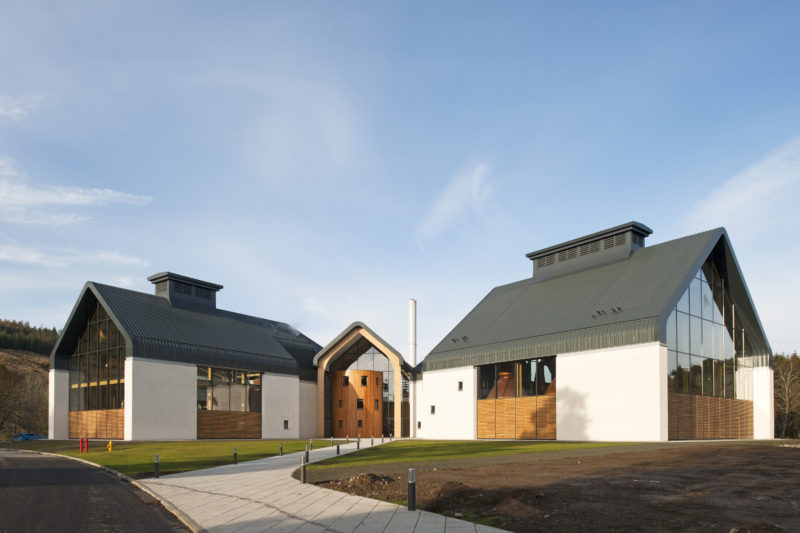
A £30 million Scotch whisky distillery used architectural glazing by Kawneer to improve transparency and showcase its equipment in a bright and spacious setting.
Kawneer’s AA110 dry-glazed and externally-capped curtain walling and series 350 severe-duty commercial entrance doors were specified for the Dalmunach Distillery on the banks of the River Spey.
Designed by Archial Norr, the distillery was commissioned by Chivas Brothers to replace the former Imperial Distillery.
Chivas wanted a facility that would shed light on the manufacturing process in a transparent way.
The layout of the distillery was inspired by the shape of a sheaf of barley. The site is based over two levels, with the main production level on the first floor.
Kawneer’s curtain walling has been used as the principal screens in the Mash House and Still Room, including the gable screens which also house the large louvered timber access doors.
Kawneer said the design of the curtain wall, with glass units more than 10m2 in size and weighing up to 540kgs, allowed for “partial demountability” to allow for future removal of the glass for maintenance of equipment.
The systems were installed over five months for main contractor Robertson by approved specialist sub-contractor Linn-Tech Scotland.
Director Dennis Whiting commented, “Due to UK manufacturing limitations all the double glazing units were manufactured and crated by Mayer Glastechnik in Austria for road shipping to Scotland but there was only one breakage on the entire project.
“Kawneer was considered most appropriate for the design requirements which entailed large, heavy and thick double-glazing units – some 36mm thick, the largest being almost 11m2 each and weighing 540kgs.
“In addition, the 65mm profile of the AA110 curtain walling provided the necessary rebate depth to ensure adequate edge cover and to accommodate movement and rebate ventilation in service.”
Dalmunach’s annual output of 1,000,000 litres of alcohol per year reportedly makes it the second highest capacity distillery that Chivas owns, just behind The Glenlivet. This is said to provide an increase of 10% in the company’s malt whisky distilling capacity.
Robertson worked with designers to ensure the inlet and discharge pipework met functional requirements while minimising the environmental risks to the River Spey and surrounding areas. ‘In-river’ works could only take place during the period between the end of the fishing season and the start of the salmon spawning season. This, Kawneer said, led Robertson to consider pre-cast and pre-fabrication solutions for the key elements.







